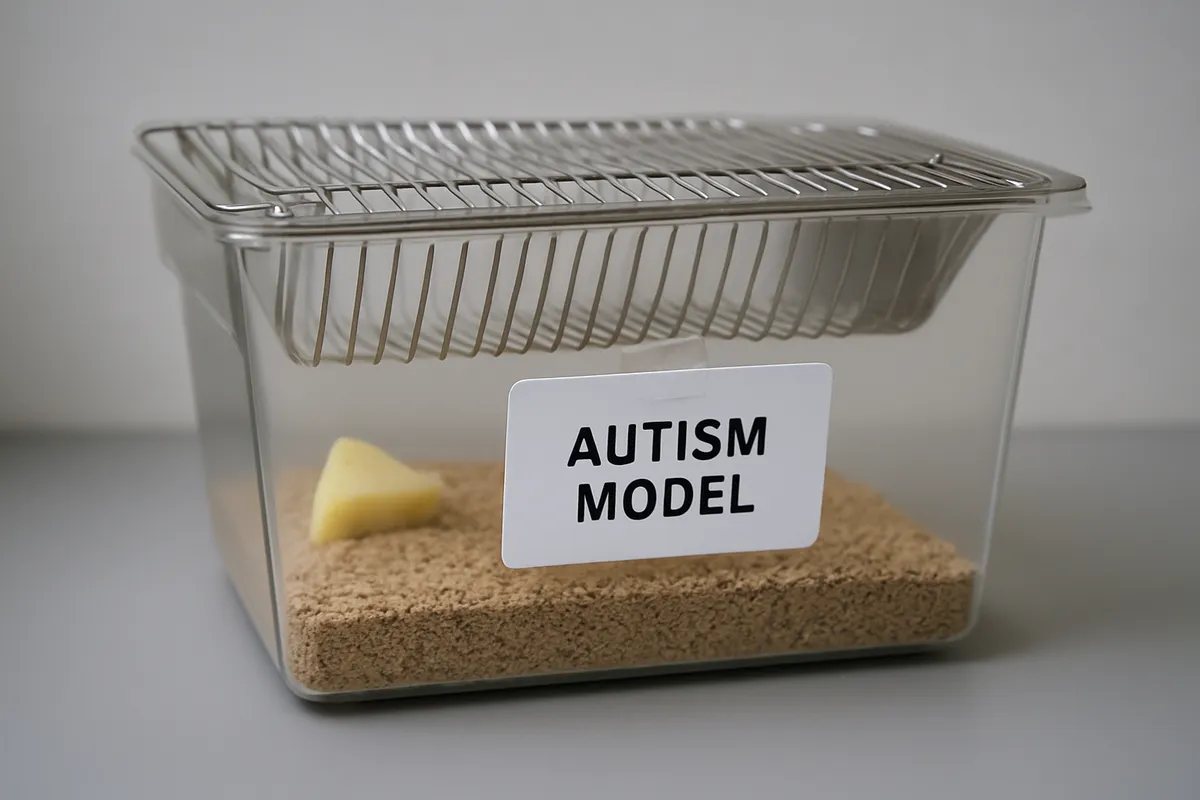Correcting Mice, Diagnosing People: A Red Flag From Army Medical University
 Here we go again. Another autism study. Another mouse. Another sniff test. Another attempt to retrofit autistic life into a molecular rescue story.
Here we go again. Another autism study. Another mouse. Another sniff test. Another attempt to retrofit autistic life into a molecular rescue story.
The paper in question — "Prenatal valproic acid on the basis of gestational diabetes also induces autistic behavior and disrupts myelination and oligodendroglial maturation slightly in offspring" — was published August 7, 2025, in Translational Psychiatry. The research team, led by Jiyin Zhou at the Second Affiliated Hospital of Army Medical University (Third Military Medical University) in Chongqing, China, used mouse models to investigate the interaction between valproic acid (VPA), gestational diabetes mellitus (GDM) and neurodevelopmental outcomes labeled as "autistic behavior."
The Frame
This paper is another entry in a long line of mechanistic autism studies that use animal proxies to draw conclusions about human neurodevelopment. It does not ask what autism is. It assumes autism is a defect. It does not ask whether mice can be autistic. It assumes their disinterest in unfamiliar cage-mates is equivalent to our lives. It does not question whether social avoidance in a glucose-stressed rodent is analogous to autistic embodiment. It simply writes us in as pathology and writes us out of the room.
The Premise
The authors expose pregnant mice to high-fat diets and VPA injections. Offspring are then evaluated for white matter integrity, social approach behaviors and molecular markers of oligodendrocyte development. When the pups spend less time sniffing cage-mates, the researchers call it autistic behavior. When clemastine increases myelination and the sniffing resumes, they call it rescue. Autism becomes a thing to prevent, not a way to be. A deficit to normalize, not a divergence to understand.
The Consequences
This isn’t just about mice. This is a paper that:
- Frames autistic people as the outcome of maternal pathology
- Treats gestational diabetes as a prenatal injury that must be managed to avoid autistic traits
- Labels clemastine as a potential treatment for "autistic behavior"
- Uses the phrase "ameliorated autistic behaviors" with no ethical acknowledgment of who gets to define which behaviors need amending
Zhou and colleagues never ask whether the frame is sound. They ask only how to manipulate it. When the GDM and VPA pathways have opposing effects, they call them antagonistic. They do not consider that their entire model antagonizes autistic life.
The Mouse Always Sniffs Wrong
Every few months, a study gives a mouse VPA, watches it groom too much and calls it autistic. The authors run maze tests, tweak molecular pathways and report that sniffing improves. That’s the story arc. It hasn’t changed in twenty years.
If it seems tired, it’s because it is. If it seems precise, look again. These models don’t describe autism. They perform it — in deficit, in silence, in a species that can’t say no to the frame. And they do it without ever asking what autistic life is for, not just what it deviates from.
The Harm
This study is methodologically competent — and narratively violent. It’s participatory in name only and autistic in utility alone. It was not done with us. If it had been, someone would’ve stopped it before now.
The Ask
We’re not asking researchers to stop studying development. We’re asking them to start studying their frames.
If your model starts from damage, it will find what it’s looking for. If your method can’t hold autistic difference without calling it defect, it will pathologize by design. If your metric for success is how much a mouse sniffs, you’re not modeling autism — you’re rehearsing discomfort with divergence.
Autistic life isn’t a byproduct of failed myelination. It’s a way of moving, sensing and relating that will never be legible to those who only measure it to erase it.
You want insight? Start with respect. Start with framing that can survive being read by the people you’re writing about.